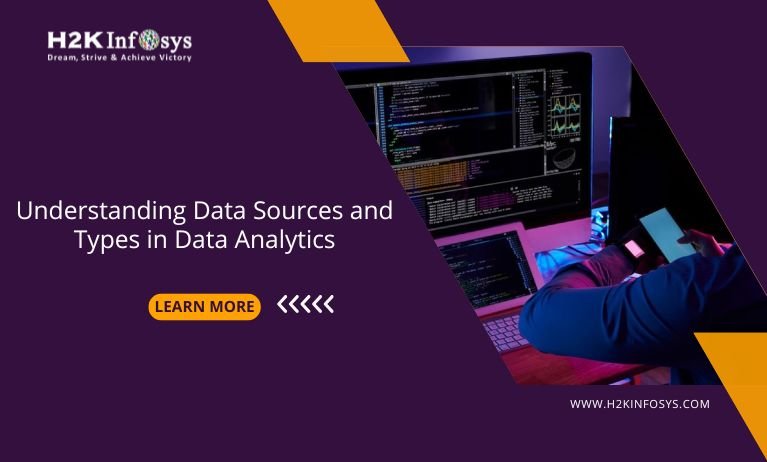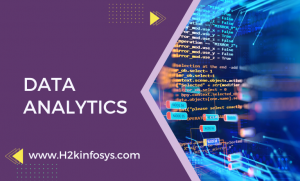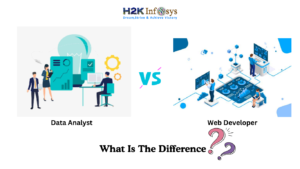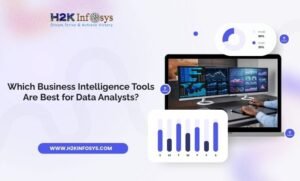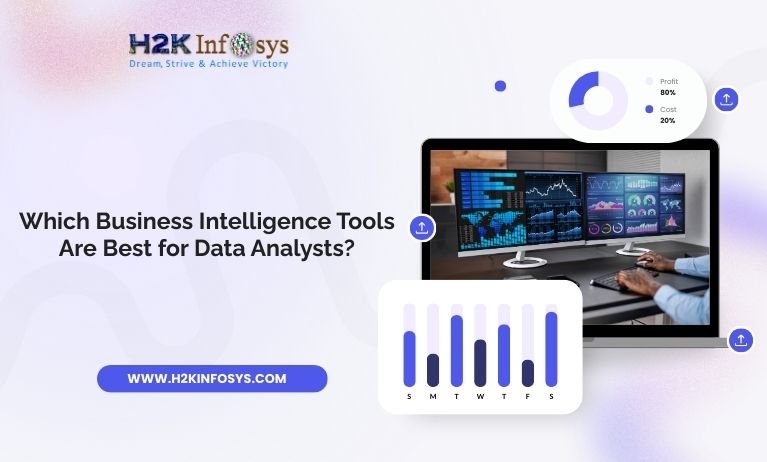Introduction
In today’s digital world, data drives everything from your Netflix recommendations to business decisions in Fortune 500 companies. But raw data, in itself, means very little unless it’s organized, understood, and analyzed. This is where understanding data sources and types becomes a cornerstone of effective data analytics.
If you’re pursuing a career in this field or exploring options like the Google Data Analytics Certification or an online data analytics certificate, grasping data sources and types is one of the first essential skills you’ll need. Why? Because how you collect, manage, and interpret data depends on where it comes from and what kind of data it is.
In this blog, we’ll take an in-depth look at data sources and types in data analytics, including their definitions, categories, use cases, and real-world applications. Whether you’re just starting or enhancing your career with training from H2K Infosys, this is a vital foundation to build.
What Are Data Sources in Data Analytics?
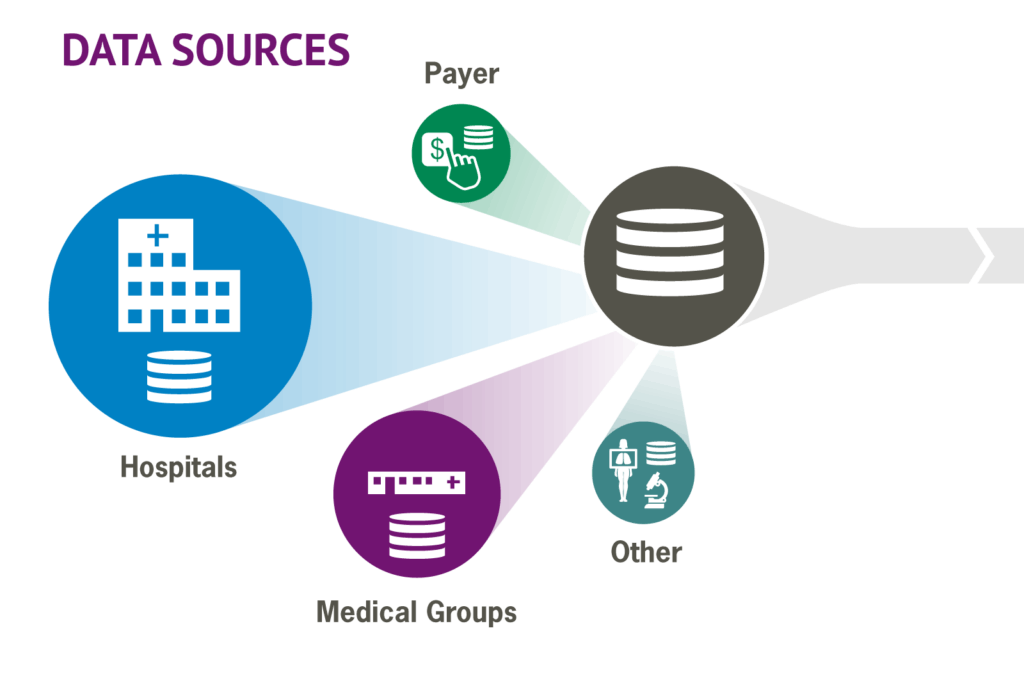
Data sources refer to the origins from where data is collected. These can be internal systems like CRMs or ERPs or external sources like websites, APIs, and public datasets. In the field of data analytics, the ability to identify, access, and evaluate data sources is critical.
Why Understanding Data Sources Is Important
- Improves data quality
- Supports data accuracy and reliability
- Determines data accessibility and cost
- Impacts analysis outcomes and business insights
A good online data analytics certificate program like H2K Infosys ensures that learners are familiar with various types of data sources and their strategic uses.
Types of Data Sources in Analytics
Data sources in data analytics are primarily divided into two major categories: primary sources and secondary sources.
Primary Data Sources
These are sources where data is collected firsthand for a specific purpose.
Examples:
- Surveys
- Observations
- Experiments
- Interviews
Real-World Use Case:
A retail company wants to understand customer satisfaction. It conducts online surveys directly with customers. This first-hand data is a primary data source.
Secondary Data Sources
These include data that has already been collected and processed by someone else for a different purpose.
Examples:
- Research articles
- Government reports
- Social media analytics
- Web data scraping
Real-World Use Case:
A startup uses World Bank economic data to forecast investment trends in emerging markets. This is an example of a secondary data source.
Structured vs. Unstructured Data: Understanding Data Types
Once you know where the data is coming from, the next step is to understand data types. Data types are crucial because they dictate the tools and techniques you’ll use to process and analyze the data.
The main types include:
Structured Data
This is data that is organized into rows and columns essentially data that fits into tables.
Examples:
- Spreadsheets
- SQL Databases
- Customer databases
Tools Used:
- SQL
- Excel
- RDBMS (Relational Database Management Systems)
Real-World Scenario:
An e-commerce platform tracks orders using a MySQL database. This structured data allows easy querying and analysis.
2. Unstructured Data
Unstructured data has no predefined format. It is more challenging to store and analyze.
Examples:
- Text documents
- Audio and video files
- Social media posts
- Emails
Tools Used:
- Python (for text mining)
- Hadoop
- Natural Language Processing (NLP) tools
Real-World Scenario:
A company uses sentiment analysis to interpret customer opinions on Twitter. These tweets are unstructured data.
Semi-Structured Data
This type falls between structured and unstructured. It doesn’t fit neatly into rows and columns but still has some organizational properties.
Examples:
- JSON files
- XML documents
- NoSQL databases (like MongoDB)
Real-World Scenario:
A mobile app stores user preferences in JSON format. The app analyzes this semi-structured data to personalize the user experience.
Classification of Data Types by Nature
Another important way to classify data types is by their nature in analytics.
Quantitative Data (Numerical)
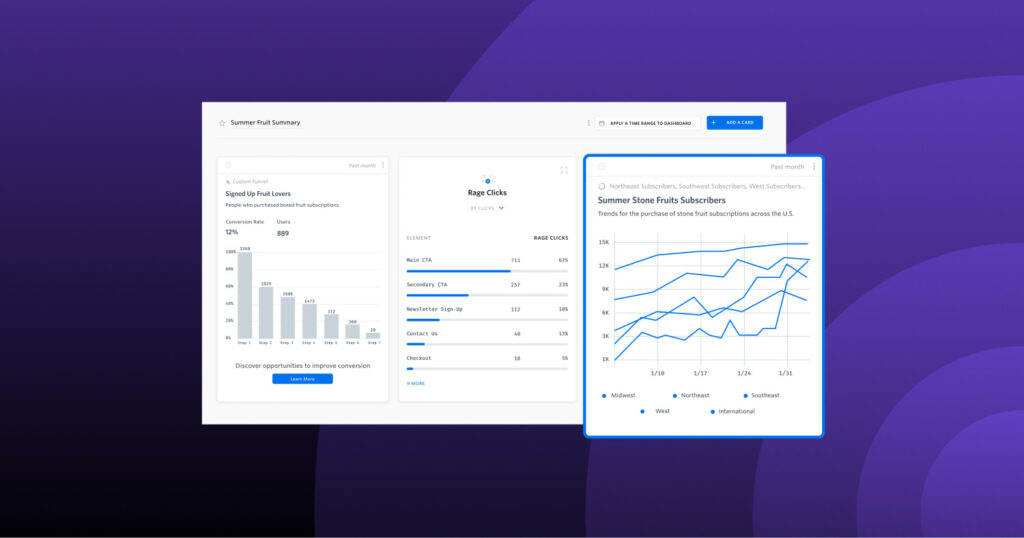
This includes measurable and countable data.
Types:
- Discrete (e.g., number of users)
- Continuous (e.g., sales revenue)
Use Cases:
- A/B testing
- Financial forecasting
- Statistical modeling
Qualitative Data (Categorical)
This includes descriptive data like labels or categories.
Types:
- Nominal (e.g., gender, country)
- Ordinal (e.g., customer satisfaction levels)
Use Cases:
- Market segmentation
- Behavioral analysis
Understanding these distinctions is vital for selecting the right analytical technique, and they’re core topics in the Google Data Analytics Certification and most online data analytics certificate programs.
Real-World Applications of Different Data Sources and Types
Healthcare
- Data Source: Electronic Health Records (structured)
- Data Type: Both quantitative (blood pressure) and qualitative (diagnosis notes)
- Tools: Python, SQL, Tableau
Marketing
- Data Source: Google Analytics (semi-structured), social media (unstructured)
- Data Type: Page views (quantitative), user feedback (qualitative)
- Tools: R, Google Data Studio
Finance
- Data Source: Trading platforms, economic reports
- Data Type: Price data (quantitative), analyst reports (qualitative)
- Tools: Excel, Power BI, Python
Tools for Handling Different Data Sources and Types
SQL – For Structured Data
sql
SELECT customer_name, purchase_amount
FROM orders
WHERE purchase_amount > 100;
Python – For Unstructured and Semi-Structured Data
python
import pandas as pd
# Load structured CSV data
df = pd.read_csv('sales_data.csv')
# Display top rows
print(df.head())
Excel – For Quick Data Visualization
- Use pivot tables for structured data.
- Charts and graphs for quick visual insights.
Tableau / Power BI – For Dashboarding Across Data Types
- Drag-and-drop features make visualization easy.
- Integrates with SQL, Excel, JSON, etc.
These tools are often part of the curriculum in online data analytics certificate programs, helping students gain hands-on experience.
Challenges in Working with Different Data Sources and Types
- Data Integration
- Combining structured and unstructured data can be time-consuming.
- Data Quality Issues
- Missing values, duplicates, and incorrect formats can skew results.
- Scalability
- Handling large data volumes requires cloud solutions and advanced tools.
- Security and Compliance
- Ensuring data privacy, especially with health or financial data, is essential.
A solid foundation in data analytics courses, like those from H2K Infosys, helps you address these challenges with confidence.
Best Practices for Managing Data Sources and Types

- Validate your data before analysis
- Document your sources and formats
- Normalize data to ensure consistency
- Back up your datasets regularly
- Automate data collection when possible using APIs
Following these best practices improves data quality and analysis accuracy topics covered extensively in the Google Data Analytics Certification.
Key Takeaways
- Data Sources and Types in Data Analytics are the origins of the data used in analysis.
- Primary data is collected firsthand, while secondary data is reused from other studies.
- Data types are classified as structured, unstructured, or semi-structured.
- Understanding quantitative vs. qualitative data is essential for selecting the right analytical method.
- Mastery of data types and sources is a core part of both the Google Data Analytics Certification and most online data analytics certificate programs.
Conclusion
Understanding data sources and types is not just a theoretical requirement it’s a daily necessity for every data analyst. As the demand for data-driven decisions continues to grow, the ability to interpret and manage different kinds of data becomes a highly valuable skill.
Ready to take the next step? Enroll in H2K Infosys’ Online data analytics certificate for hands-on learning and expert career training. Start your journey today.
